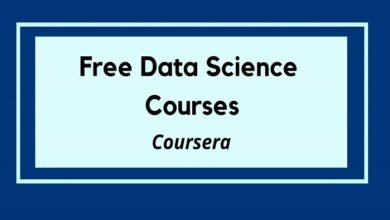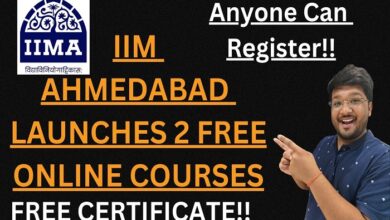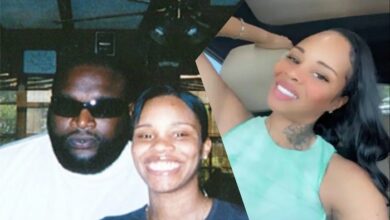Mastering the Art of “Interview Self Introduction”: A Complete Guide

The self-introduction during an interview is one of the most important elements of the hiring process. It’s your first opportunity to make a great impression and set the tone for the rest of the interview. While it may seem like a simple task, mastering the art of the “interview self introduction” is essential for standing out from other candidates. In this blog post, we will delve into what makes a strong self-introduction, provide tips on how to craft one, and share examples that can help you shine in your next interview.
What is an “Interview Self Introduction”?
An “interview self introduction” is your chance to introduce yourself to the interviewer at the beginning of the interview. Typically, the interviewer will ask you to “tell me about yourself” or a similar question. Your response should be a concise and engaging summary of who you are, your qualifications, and why you’re the perfect candidate for the job. This introduction sets the stage for the rest of the interview and provides an opportunity to highlight your skills and experience in a way that aligns with the job description.
The Importance of a Strong Interview Self Introduction
The “interview self introduction” is often the first thing the interviewer will hear from you, making it a crucial moment in the interview process. It’s your chance to grab the interviewer’s attention and make a memorable first impression. A well-crafted self-introduction can help you:
Highlight Your Key Qualifications: A strong self-introduction allows you to summarize your relevant skills and experience in a concise and engaging way.
Set a Positive Tone for the Interview: A confident, well-articulated introduction sets a professional tone for the rest of the interview and shows that you are prepared.
Showcase Your Communication Skills: The way you present yourself speaks volumes about your communication abilities, which are critical in almost every job.
Build Rapport with the Interviewer: A friendly, engaging introduction helps you connect with the interviewer, making the conversation more comfortable and natural.
A solid self-introduction lays the groundwork for a successful interview and increases your chances of advancing to the next stage of the hiring process.
How to Structure Your Interview Self Introduction
Crafting a great “interview self introduction” requires more than just stating your name and previous job titles. To make your introduction stand out, you need to structure it effectively. Here’s a simple framework you can follow:
1. Start with Your Name and Background
Begin by briefly stating your name, current job or educational status, and any relevant background information. For example, “My name is John Doe, and I am currently working as a marketing coordinator at XYZ Company.”
2. Highlight Your Relevant Skills and Experience
Next, mention your key skills and experience that are most relevant to the position you’re applying for. Focus on your accomplishments and strengths. For instance, “I have over five years of experience in digital marketing, specializing in SEO and content strategy.”
3. Discuss Why You Are Interested in the Role
Explain why you’re excited about the position and how your background aligns with the job description. For example, “I’m excited about this role because it offers the opportunity to work on innovative projects and further develop my skills in data-driven marketing.”
4. Conclude with Your Professional Goals
Finish your self-introduction by touching on your future career goals and how they align with the company’s values and mission. This shows that you’re not only qualified but also eager to grow with the organization. For example, “My goal is to continue growing as a marketing professional, and I believe this position offers the ideal environment for me to contribute and develop my skills further.”
By following this structure, you ensure that your introduction is well-rounded, informative, and relevant to the position you’re applying for.
Tips for a Memorable Interview Self Introduction
To ensure your “interview self introduction” leaves a lasting impression, follow these key tips:
Keep It Concise and Focused: While it’s important to highlight your experience and qualifications, keep your introduction brief and to the point. Avoid going into unnecessary details.
Practice Your Introduction: Rehearse your self-introduction several times to ensure you can deliver it smoothly and confidently. However, avoid memorizing it word-for-word, as this can sound unnatural.
Tailor It to the Job: Customize your introduction for each interview by aligning your skills and experience with the specific job you’re applying for. Mention relevant achievements or experiences that are in line with the company’s needs.
Be Confident and Positive: Approach your introduction with confidence, maintain good posture, and smile. A positive attitude goes a long way in making a great first impression.
Avoid Negative Language: Focus on your strengths and achievements, and avoid mentioning weaknesses or anything that could be perceived negatively.
By incorporating these tips, you’ll be able to make your “interview self introduction” more compelling and impactful.
Common Mistakes to Avoid in Your Interview Self Introduction
While it’s important to get your “interview self introduction” right, there are several common mistakes that candidates often make. Be mindful of these pitfalls:
Being Too Vague: Avoid giving a vague, generic answer like “I’m a hard worker.” Instead, be specific about your skills and accomplishments.
Talking Too Much About Personal Life: Stick to professional topics and avoid going off on tangents about your personal life unless it’s relevant to the job.
Overloading with Information: Don’t overwhelm the interviewer with too much detail. Focus on the most important and relevant information.
Being Too Modest: While it’s good to be humble, don’t undersell yourself. Don’t be afraid to mention your accomplishments and strengths.
Appearing Unprepared: A rambling or unorganized self-introduction can make you seem unprepared. Practice your introduction beforehand to ensure it flows smoothly.
By avoiding these common mistakes, you’ll ensure that your “interview self introduction” remains effective and impactful.
Example of a Strong Interview Self Introduction
Here’s an example of a well-crafted “interview self introduction” that follows the structure we discussed earlier:
“Hi, my name is Sarah Lee, and I’m currently a senior software engineer at Tech Innovations. Over the past eight years, I’ve developed expertise in back-end development, working with technologies such as Java, Python, and cloud computing. In my current role, I led a team that built a scalable cloud-based application that increased user engagement by 30%. I’m excited about the opportunity to join your team because of your company’s commitment to innovation, and I believe my technical skills and experience make me a great fit for the position. I’m eager to contribute to your projects and continue developing my leadership skills in a collaborative environment.”
This introduction is concise, highlights relevant skills and achievements, and expresses excitement about the role.
How to Adjust Your Interview Self Introduction for Different Job Types
Your “interview self introduction” may need to vary depending on the role you’re applying for. Here are some tips for adjusting it based on different job types:
For Technical Roles: Emphasize your technical skills, certifications, and any relevant projects you’ve worked on. Be specific about the technologies you’ve used and how they’ve contributed to your success.
For Creative Roles: Focus on your creativity, problem-solving skills, and any projects or work samples that showcase your abilities. Mention any awards or recognition you’ve received.
For Management Positions: Highlight your leadership experience, ability to manage teams, and any successful projects you’ve led. Discuss how your experience aligns with the company’s goals and mission.
For Entry-Level Positions: Emphasize your enthusiasm, willingness to learn, and any relevant coursework, internships, or volunteer experience. Focus on your passion for the industry and eagerness to grow professionally.
By tailoring your introduction to suit the specific job type, you increase your chances of making a great first impression.
Conclusion
In conclusion, the “interview self introduction” is a vital part of your job interview that can significantly influence the outcome. By crafting a concise, engaging, and tailored introduction, you can set a positive tone for the rest of the interview and showcase your skills and experience. Practice your introduction, keep it relevant to the job, and be confident in your delivery. By avoiding common mistakes and tailoring your approach to the specific role, you’ll ensure that your self-introduction leaves a lasting impression on the interviewer.
FAQs
1. What should I include in my interview self introduction?
Your interview self introduction should include your name, relevant qualifications and experience, your interest in the role, and your future goals.
2. How long should my interview self introduction be?
Aim for a self-introduction that is around 1-2 minutes long. It should be concise while providing enough detail to showcase your qualifications.
3. How do I handle nervousness during my self introduction?
To manage nervousness, practice your introduction beforehand, focus on your breathing, and maintain a positive mindset. Confidence will grow with preparation.
4. Should I mention personal information in my self introduction?
It’s best to stick to professional information that is relevant to the job. Personal details should only be mentioned if they contribute to your qualifications.
5. Can I use a script for my interview self introduction?
While it’s helpful to have a script for reference, avoid reading directly from it. Instead, practice delivering it naturally to sound more authentic.





